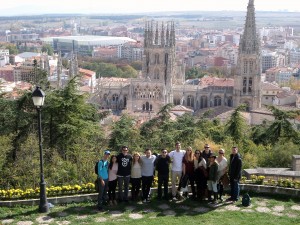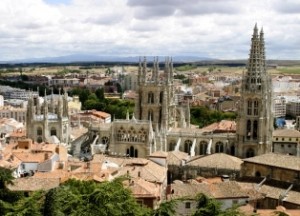
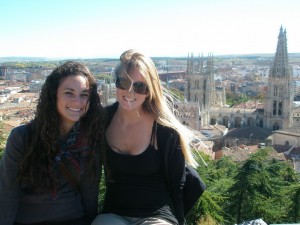
BURGOS, A CITY ON THE CAMINO DE SANTIAGO (Way of St. James)
Burgos is located in the heart of the Camino de Santiago – the Road to Santiago/Way of St. James – and was a key area in the development of the Kingdom of Castile, as well as in the emergence of some of its historical and literary legends such as el Cid. The city boasts one of the most spectacular Gothic monuments, the Cathedral of Saint Mary, designated a UNESCO World Heritage Site, and is also home to the Museum of Human Evolution, opened in 2010 to preserve and spread awareness of the valuable archaeological remains found in the nearby mountain range at Atapuerca, one of the most important sites anywhere in the world reflecting the evolution of mankind.
PROGRAMME FOR THE TRIP
In the morning, the trip will start with a walk around the city of Burgos, commencing in the Plaza del Mio Cid and visiting the places detailed in the itinerary. The teachers’ explanations will help students gain an understanding of the history and culture of both the city and of Spain. Around noon, students will have free time and, in the afternoon the whole group will head off for the Carthusian Monastery of Miraflores to take a walk around the inside, visiting the central patio, the church, and the side chapels currently used as exhibition rooms.
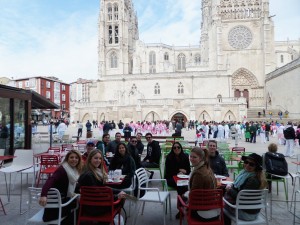
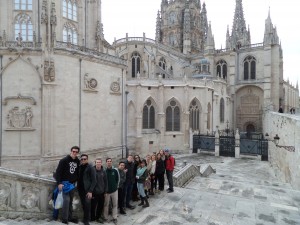
TOUR OF THE CITY
During our trip, we will be visiting some of the city’s most important areas:
Statue of el Cid and the Espolón Boulevard: this popular boulevard, built in the late 18th and early 19th century, runs parallel to the river Arlanzón and is adorned by gardens and wooded areas. It contains statues of Spanish monarchs that were originally intended to decorate the Royal Palace in Madrid.
Arch of Saint Mary: is one of the many gates that afforded entry to the medieval town through the walls. The current layout of the Arch of Saint Mary dates from the 16th century and was designed as a triumphal arch more than a defensive gate.
Cathedral of Saint Mary: the cathedral was built in a French Gothic style in the 13th century and underwent major reforms in the centuries that followed. Its magnificent 15th century German style spires adorn the outside of the cathedral. The inside houses countless artistic treasures such as the Golden Staircase, the Tomb of el Cid and his wife or the spectacular Condestable Chapel.
The viewpoint and the Castle: set high over the city is a pleasant park and recreational area holding the remains of an ancient 9th century fortress, and linked to the origins of the medieval city during the Reconquest. Next to the castle is a viewpoint which looks out over the whole of the city centre and the nearby mountain ranges of Burgos.
House of the Cord: a 15th century stately home. Its façade displays the decoration of the Franciscan cord from which it takes its name, and the coats of arms of the nobles that remind us of its history. This house witnessed many important historical events and welcomed many illustrious guests such as Christopher Columbus or Joanna the Mad and her husband Philip the Handsome.
The Carthusian Monastery of Miraflores: a monastery for Carthusian monks located three kilometres outside the city. Inside are the tombs of King John II and Queen Isabel of Portugal, the parents of Queen Isabel the Catholic. On one side, adjacent to the wall, is the tomb of the infant Alphonse of Castile, brother of Queen Isabel the Catholic. Both funerary ensembles are made in alabaster and are splendid examples of Isabelline gothic. The main altarpiece is a further example of magnificent gothic style work, in this case polychrome wood.
